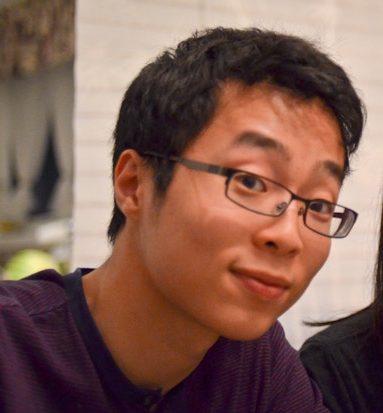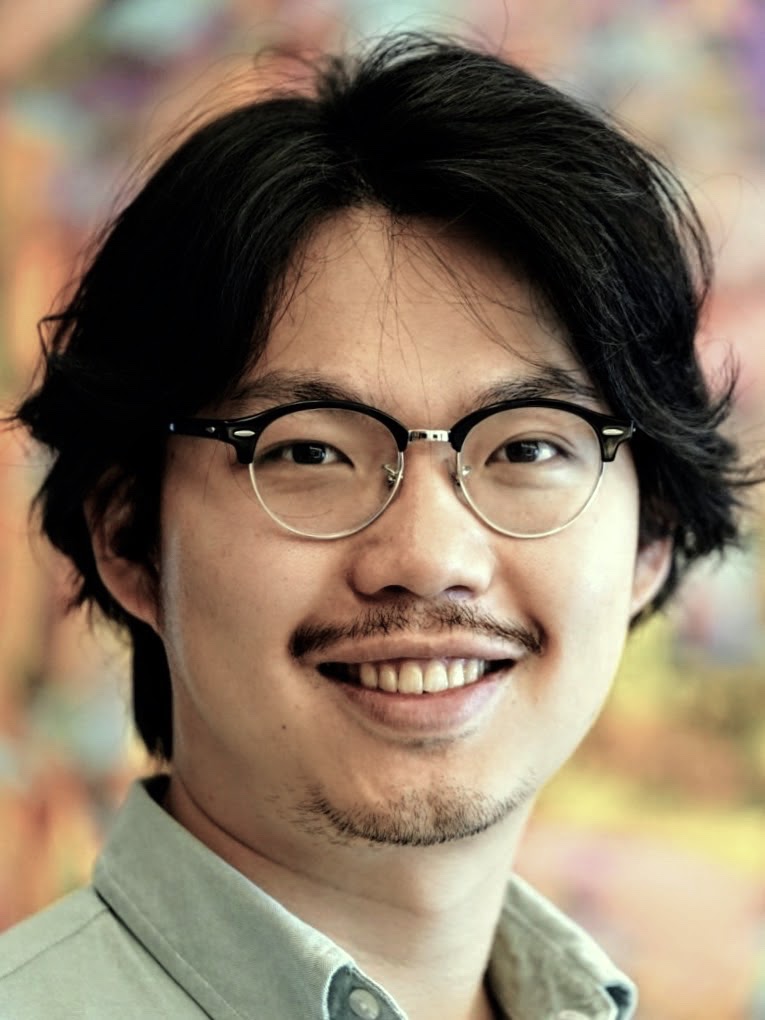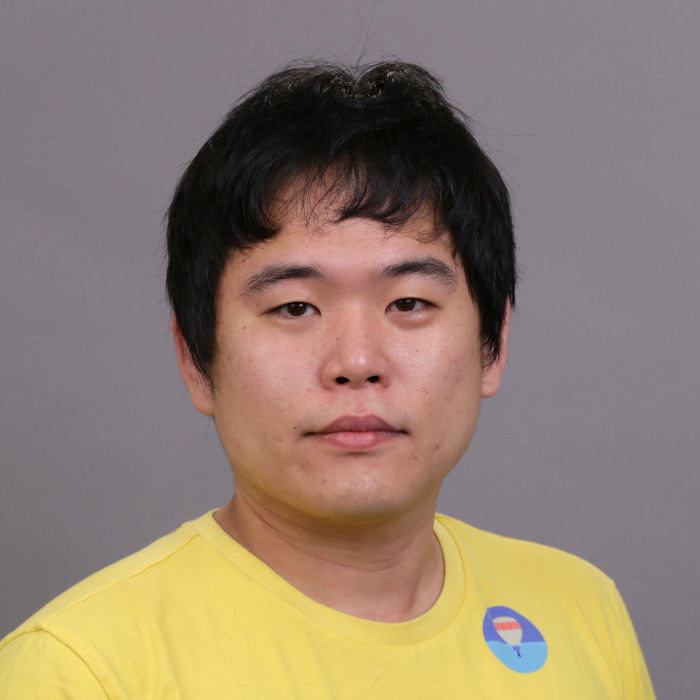An Analysis of Show, Attend and Tell: Neural Image Caption Generation with Visual Attention
This paper presents an attention-based approach to image captioning that aligns well with my group's interests in developing interpretable multimodal architectures for natural language generation tasks. Of particular interest is the model's ability to visualize where it attends as it produces the caption words. This transparency into the reasoning process distinguishes it from previous captioning models that operated as black boxes. Understanding attention patterns could significantly advance our goal of designing transparent and trustworthy AI systems. Additionally, the general encoder-decoder structure makes this framework extensible to video and audio captioning. This could allow multimodal knowledge transfer across domains and aid in our objective to build architectures that generalize broadly across tasks.
Automatically generating captions of an image is a task very close to the heart of scene understanding—one of the primary goals of computer vision. Not only must caption generation models be powerful enough to solve the computer vision challenges of determining which objects are in an image, but they must also be capable of capturing and expressing their relationships in a natural language. It amounts to mimicking the remarkable human ability to compress huge amounts of salient visual information into descriptive language.
Literature Review
1. Foundation in Machine Translation ([Cho et.al., 2014]; [Bahdanau et al., 2014]; [Sutskever et al., 2014]):Many methods use recurrent neural networks (RNNs) inspired by sequence-to-sequence training in machine translation for image caption generation. Various approaches utilize convolutional neural networks (CNNs) to obtain image representations and RNNs to decode these representations into natural language sentences. [Donahue et al. 2014]: Applied LSTMs to videos for generating video descriptions.
2. Early Neural Network Approaches:[Kiros et al. 2014a] and [Kiros et al. 2014b]: Introduced a multimodal log-bilinear model biased by image features. The later method explicitly allowed both ranking and generation.
[Mao et al. 2014]: Replaced feed-forward neural language model with a recurrent one.
[Vinyals et al. 2014] and [Donahue et al. 2014]: Used LSTM RNNs, with the distinction that Vinyals et al. only showed the image to the RNN at the beginning.
All of these works represent images as a single feature vector from the top layer of a pre-trained convolutional network.
3. Joint Embedding Space [Karpathy & Li 2014]:Proposed learning a joint embedding space for ranking and generation. The model scores sentence and image similarity based on R-CNN object detections and bidirectional RNN outputs.
4. Object Detection-Based Approaches [Fang et al. (2014)]:Introduced a three-step pipeline for generation incorporating object detections and multi-instance learning framework. Their model first learned detectors for visual concepts and applied a language model to the detector outputs.
5. Attention in Neural Networks:Historical Line of Work: Previous work, including [Larochelle & Hinton (2010)], [ Denil et al. (2012)], [ Tang et al. (2014)], incorporated attention into neural networks for vision-related tasks.
Direct Extension of Previous Work: The current work directly extends the work of [Bahdanau et al., 2014] Neural machine translation by jointly learning to align and translate., [ Mnih et al. (2014)] Recurrent models of visual attention, and [Ba et al. (2014)]Multiple object recognition with visual attention, focusing on attention mechanisms in the context of image caption generation.
Biography
1. Kelvin Xu

Kelvin Xu
Kelvin Xu is a highly accomplished researcher in the field of artificial intelligence currently working at Google Deepmind. He recently completed his PhD at the University of California, Berkeley, under the guidance of Prof. Sergey Levine. His research focus lies in creating practical and valuable AI systems, a passion that he cultivated during his tenure at Google as part of the inaugural Brain Residency Program. Prior to joining Berkeley, Kelvin pursued his master's degree at the MILA lab at the Université de Montréal, working closely with luminaries such as Turing Award Winner Prof. Yoshua Bengio and Prof. Aaron Courville. His involvement with the Engineering Science Program at the University of Toronto during his undergraduate years laid the foundation for his academic journey. \ Kelvin's expertise spans various aspects of artificial intelligence, including deep learning, sequence models, image captioning, attention mechanisms, and reinforcement learning. His impressive academic background, diverse experiences, and collaborations with leading experts in the field underscore his commitment to advancing the frontiers of AI technology.
2. Jimmy Ba

Jimmy Ba
Jimmy L. Ba is an Assistant Professor in the Department of Computer Science at the University of Toronto, renowned for his significant contributions to the field of artificial intelligence. He completed his undergraduate, Master's, and PhD degrees at the University of Toronto under the mentorship of Geoffrey Hinton, Brendan Frey, and Ruslan Salakhutdinov. Notably, Jimmy is recognized for co-developing the Adam Optimizer, a pivotal algorithm widely used for training deep learning models. As a Canada CIFAR AI Chair at the Vector Institute, Jimmy's research interests span reinforcement learning, computational cognitive science, artificial intelligence, computational biology, and statistical learning theory. He has received prestigious accolades, including the Facebook Graduate Fellowship in 2016, and has demonstrated his leadership in AI by achieving the highest place among academic labs in the image caption generation competition at CVPR 2015. Jimmy Ba's dedication to developing efficient learning algorithms for deep neural networks reflects his commitment to advancing the frontiers of AI and computational problem-solving machines with human-like efficiency and adaptability.
3. Jamie Ryan Kiros

Jamie Ryan Kiros
Jamie Ryan Krios is a distinguished researcher who recently earned a PhD from the Machine Learning Group at the Department of Computer Science, University of Toronto. Under the guidance of esteemed advisors Dr. Ruslan Salakhutdinov and Dr. Richard Zemel, Jamie's research has made notable contributions to the field of machine learning. His work, exemplified by the renowned research paper titled "Layer Normalization" authored alongside Jimmy L Ba and Geoffrey Hinton, has garnered significant attention, with its impact reflected in the number of citations it has received. This achievement underscores Jamie's commitment to advancing the understanding and techniques within the realm of machine learning, and collaboration with leading figures in the field demonstrates his dedication to rigorous and impactful research. As he moves forward in his academic and professional journey, Jamie Ryan Krios is poised to continue making substantial contributions to the field of machine learning.
4. Kyunghyun Cho

Kyunghyun Cho
Kyunghyun Cho, currently an Associate Professor of Computer Science and Data Science at NYU's Courant Institute of Mathematical Sciences, is a leading researcher in the field of artificial intelligence with a passion for building intelligent machines that actively engage in communication, knowledge-seeking, and knowledge creation. Cho has significantly contributed to the domains of natural language processing and machine translation. His work on attention mechanisms for artificial neural networks and the introduction of 'neural machine translation' as a paradigm has not only propelled research forward but has also influenced industry practices, resulting in the development of improved machine translation systems. Beyond human languages, Cho has delved into the study of emergent communication among machines, aiming to equip them with efficient information exchange capabilities to collaboratively solve complex problems. Recognized with prestigious awards, including the Google Research Award in 2016 and 2017, Cho's impactful publications, such as "Show, Attend and Tell: Neural Image Caption Generation with Visual Attention," have left an indelible mark on the field. His multidimensional approach to AI research reflects a commitment to advancing machine learning and facilitating collaboration among intelligent agents for problem-solving.
5. Aaron Courville

Aaron Courville
Dr. Aaron Courville is a distinguished Canadian computer scientist and a Canada CIFAR AI Chair at Mila, affiliated with the Department of Computer Science and Operations Research at the Université de Montréal. With a Bachelor's and Master's degree in Electrical Engineering from the University of Toronto and a PhD in Computer Science from Carnegie Mellon University, Courville has become a leading expert in the field. As a faculty member at MILA and a CIFAR fellow, his research focuses on advancing deep learning models and methods, with a particular emphasis on developing probabilistic models and innovative inference techniques. While his primary focus is on computer vision, Courville's interests extend to diverse domains, including natural language processing, audio signal processing, and speech understanding. His notable contributions include book chapters in collaboration with Yoshua Bengio and significant publications such as "Show, Attend and Tell: Neural Image Caption Generation with Visual Attention." Courville's accolades include being a winning team member in prestigious challenges, reflecting his impact on the field of artificial intelligence.
6. Ruslan Salakhutdinov

Ruslan Salakhutdinov
Dr. Ruslan Salakhutdinov is a prominent figure in the field of machine learning, renowned for his contributions to deep learning, machine learning, and large-scale optimization. He obtained his PhD in machine learning from the University of Toronto in 2009 and subsequently conducted post-doctoral research at the Massachusetts Institute of Technology Artificial Intelligence Lab. Later, he became an Assistant Professor at the University of Toronto, holding positions in the Department of Computer Science and the Department of Statistics. In 2016, Ruslan joined the Machine Learning Department at Carnegie Mellon University as an Associate Professor. His research is dedicated to unraveling the computational and statistical principles essential for discovering structure in vast datasets. Ruslan has earned numerous accolades, including being an Alfred P. Sloan Research Fellow, Microsoft Research Faculty Fellow, Canada Research Chair in Statistical Machine Learning, and a recipient of prestigious awards such as the Early Researcher Award, Connaught New Researcher Award, Google Faculty Award, and Nvidia's Pioneers of AI award. Additionally, he serves as an action editor for the Journal of Machine Learning Research and has contributed significantly to the senior program committees of major learning conferences, including NIPS and ICML. As a Senior Fellow of the Canadian Institute for Advanced Research, Ruslan Salakhutdinov continues to be a driving force in advancing our understanding of machine learning principles and applications.
7. Richard S. Zemel

Richard S. Zemel
Professor Richard S. Zemel is a distinguished figure in the field of computer science, currently serving as a Professor of Computer Science at the University of Toronto. With a rich academic history, Zemel received his B.Sc. in History & Science from Harvard University in 1984, followed by a Ph.D. in Computer Science from the University of Toronto in 1993 under the supervision of Geoffrey Hinton. Prior to joining the University of Toronto faculty in 2000, he held positions at the University of Arizona and completed postdoctoral fellowships at the Salk Institute and Carnegie Mellon University. Zemel's research contributions are significant, focusing on foundational work in unsupervised learning, learning to rank and recommend items, and developing machine learning systems for tasks like automatic captioning and image-related question answering. In addition to his academic achievements, he co-founded SmartFinance, a financial technology startup. Zemel's honors include an NVIDIA Pioneers of AI Award, a Young Investigator Award from the Office of Naval Research, multiple NSERC Discovery Accelerators, and Dean's Excellence Awards at the University of Toronto. His extensive service to the machine learning community is highlighted by his role on the Executive Board of the Neural Information Processing Society, which oversees premier international conferences in the field.
8. Yoshua Bengio

Yoshua Bengio
Professor Yoshua Bengio is a preeminent figure in the realm of artificial intelligence and deep learning, currently holding the position of Full Professor in the Department of Computer Science and Operations Research at Université de Montreal. His contributions to the field are monumental, serving as the Founder and Scientific Director of Mila, a prominent AI research institute, and the Scientific Director of IVADO. Bengio's expertise and influence extend globally, earning him the prestigious 2018 A.M. Turing Award alongside Geoff Hinton and Yann LeCun, recognized as the Nobel Prize of computing. His remarkable achievements have garnered numerous accolades, including being a Fellow of both the Royal Society of London and Canada, an Officer of the Order of Canada, a Knight of the Legion of Honor of France, and a Canada CIFAR AI Chair. Additionally, Bengio is a respected member of the UN's Scientific Advisory Board for Independent Advice on Breakthroughs in Science and Technology, solidifying his position as a leader shaping the future of artificial intelligence.
Social Impact
The research paper has the potential to bring about both positive and negative societal effects. On the positive side, the development of an attention-based model for automatically describing the content of images has implications for various applications. The technology can significantly improve image captioning systems, making them more accurate and contextually relevant. This could enhance accessibility for individuals with visual impairments, providing them with a richer understanding of visual content. Moreover, the model's ability to fix its gaze on salient objects while generating corresponding words may lead to advancements in computer vision, benefiting fields such as autonomous vehicles, surveillance, and robotics.
However, potential negative societal effects should also be considered. The accuracy of image captioning systems heavily relies on the data used for training. If the training data contains biases or reflects societal stereotypes, the model may perpetuate or even amplify these biases in its captions. This could contribute to reinforcing societal inequalities or misrepresenting certain groups. Additionally, the widespread use of advanced image captioning systems may raise privacy concerns, especially if misused for surveillance purposes or if individuals' private information is inadvertently disclosed through generated captions. Ethical considerations surrounding the responsible deployment of such technologies should be carefully addressed to mitigate these potential negative impacts.
Industry Applications
The paper presents a method that holds promising practical applications across various industries. One key application field is in web traffic control strategies, where image captioning can play a pivotal role in improving the visibility and ranking of websites or pages. By providing captions to images, not only can the posting process be streamlined, reducing user operations, but the captions can also serve as HTML header and alternative attribute content. This, in turn, enhances the search engine scoring of pages, making them more discoverable for relevant search terms. Improved web visibility can lead to increased web traffic, contributing to enhanced ad impression revenue for online platforms.
Moreover, in the realm of e-commerce, image captioning can be utilized to improve online purchase daily volume. By automatically generating captions that accurately describe product images, the user experience can be enriched, potentially leading to higher conversion rates. Additionally, the technique can find applications in marketing strategies, where captions can be leveraged to acquire contact lists with consumer or business interests as fields. This information can be invaluable for targeted marketing campaigns.
Moreover, in the realm of e-commerce, image captioning can be utilized to improve online purchase daily volume. By automatically generating captions that accurately describe product images, the user experience can be enriched, potentially leading to higher conversion rates. Additionally, the technique can find applications in marketing strategies, where captions can be leveraged to acquire contact lists with consumer or business interests as fields. This information can be invaluable for targeted marketing campaigns.
Follow on Research
The paper could explore the extension of the attention mechanism to multi-modal scenarios. The existing work primarily focuses on image captioning, but with the growing prevalence of multi-modal data (combining images with text, audio, or other modalities), there is an opportunity to enhance the model's capabilities.
The proposed project could involve adapting the attention mechanism to handle multiple modalities simultaneously, allowing the model to generate captions that incorporate information from diverse sources. For instance, the model could be trained on datasets that include images paired with textual descriptions, audio clips, or even sensor data. The attention mechanism would need to dynamically allocate focus across different modalities, improving the model's ability to generate more contextually rich and comprehensive captions.
This extension could have significant implications in various domains, such as multimedia content analysis, assistive technologies for individuals with sensory impairments, and applications in robotics that involve processing information from multiple sensors. The project could explore how the attention mechanism adapts to different modalities, how it integrates information from various sources, and how it contributes to the overall captioning performance in multi-modal scenarios. By delving into multi-modal attention mechanisms, this research could open avenues for creating more versatile and adaptive AI systems capable of handling the complexity inherent in real-world, multi-sensory data. It aligns with the broader trend in AI research towards developing models that can effectively process and understand information from diverse sources, paving the way for more robust and context-aware applications.
Peer Review
Summary:
The paper proposes two attention-based image captioning models - a "soft" deterministic model and a "hard" stochastic model. The key idea is to use an attention mechanism to focus on salient parts of an image when generating caption words. This differs from prior works that encode the entire image into one vector. The models achieve state-of-the-art results on Flickr8k, Flickr30k and MS COCO datasets.
Strengths and WeaknessesOriginality: The visual attention approach for caption generation is novel and differs from previous work. Combining this technique with encoder-decoder RNNs is a unique contribution. Related work is adequately cited.
Quality: The submission is technically sound with experimental results demonstrating state-of-the-art performance. The methods follow standard practices and are appropriate. This is a complete piece with thorough evaluation.
Clarity: The paper is clearly written and well structured. The attention mechanism and models are described in sufficient detail. Results are clearly presented and intuitive visualizations are provided.
Significance: The techniques meaningfully advance caption generation performance. Attention is more interpretable and better mimics human perception. This work is highly valuable for the research community and suitable for building upon.
In terms of weaknesses, there is no discussion of potential negative societal impacts or limitations beyond model performance. But overall the submission has significant strengths highlighting both the technical qualities and relevance of the work.
Confidence ScoreI would give this submission an overall score of 8 - Strong Accept.
The reasons are:
- Technically strong methodology with attention mechanism for image captioning
- Novel approach that differs from prior state of the art
- State-of-the-art results demonstrating excellent impact
- Thorough evaluations on multiple benchmark datasets
- Well-written paper clearly describing the techniques
- Visualizations provide added interpretability
There are no major weakness observed regarding evaluation or ethical considerations. The paper makes both technical and practical contributions advancing the field of image caption generation. While it does not seem to represent the absolute highest bar of being a flawless groundbreaking contribution, the work is certainly novel and valuable with measurable impact worthy of acceptance.
[Cho et.al., 2014] Cho, Kyunghyun, van Merrienboer, Bart, Gulcehre, Caglar, Bougares, Fethi, Schwenk, Holger, and Bengio, Yoshua. Learning phrase representations using RNN encoder-decoder for statistical machine translation In EMNLP, October 2014.
[Bahdanau et al., 2014] Bahdanau, Dzmitry, Cho, Kyunghyun, and Bengio, Yoshua. Neural machine translation by jointly learning to align and translate CoRR 2014
[Sutskever et al., 2014 ] Sutskever, Ilya, Vinyals, Oriol, and Le, Quoc VV. Sequence to sequence learning with neural networks. NIPS2014
[Donahue et al. 2014 ] Donahue, Jeff, Hendrikcs, Lisa Anne, Guadarrama, Segio,Rohrbach, Marcus, Venugopalan, Subhashini, Saenko, Kate, and Darrell, Trevor. Long-term recurrent convolutional networks for visual recognition and description. arXiv:1411.4389v2, November 2014.
[Kiros et al. 2014a ] Kiros, Ryan, Salahutdinov, Ruslan, and Zemel, Richard. Multimodal neural language models. In International Conference on Machine Learning, pp. 595–603, 2014a.
[Kiros et al. 2014b ] Kiros, Ryan, Salahutdinov, Ruslan, and Zemel, Richard. Unifying visual-semantic embeddings with multimodal neural language models. arXiv:1411.2539, November 2014b.
[Mao et al. 2014 ] Mao, Junhua, Xu, Wei, Yang, Yi, Wang, Jiang, and Yuille, Alan. Deep captioning with multimodal recurrent neural networks (m-rnn). arXiv:1412.6632, December 2014.
[Vinyals et al. 2014 ] Vinyals, Oriol, Toshev, Alexander, Bengio, Samy, and Erhan, Dumitru. Show and tell: A neural image caption generator. arXiv:1411.4555, November 2014.
[Karpathy & Li 2014] Karpathy, Andrej and Li, Fei-Fei. Deep visual-semantic alignments for generating image descriptions. arXiv:1412.2306,December 2014.
[Fang et al. (2014)] Fang, Hao, Gupta, Saurabh, Iandola, Forrest, Srivastava, Rupesh, Deng, Li, Doll´ar, Piotr, Gao, Jianfeng, He, Xiaodong, Mitchell, Margaret, Platt, John, et al From captions to visual concepts and back. arXiv:1411.4952, November 2014.
[Larochelle & Hinton (2010)] Larochelle, Hugo and Hinton, Geoffrey E. Learning to combine foveal glimpses with a third-order boltzmann machine. In NIPS, pp. 1243–1251, 2010.
[ Denil et al. (2012)] Denil, Misha, Bazzani, Loris, Larochelle, Hugo, and de Freitas, Nando. Learning where to attend with deep architectures for image tracking. Neural Computation, 2012.
[Tang et al. (2014)] Tang, Yichuan, Srivastava, Nitish, and Salakhutdinov, Ruslan R. Learning generative models with visual attention. In NIPS, pp.1808–1816, 2014.
[Mnih et al. (2014)] Mnih, Volodymyr, Hees, Nicolas, Graves, Alex, and Kavukcuoglu, Koray. Recurrent models of visual attention. In NIPS, 2014.
[Ba et al. (2014)] Ba, Jimmy Lei, Mnih, Volodymyr, and Kavukcuoglu, Koray. Multiple object recognition with visual attention. arXiv:1412.7755, December 2014.
Team Members
- Ayush J Patel
- Kush Suryavanshi
- Spandan Maheshwari